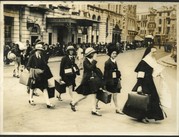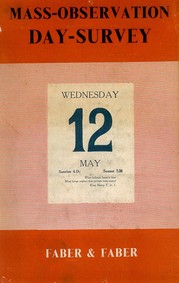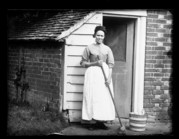|
Would you like to view the web page version of this email? Click here
|
|
|
|
|
|
|
Documenting the Covid-19 pandemic - how you can help us, plus a series of blog posts to mark VE Day and our new Archive of the Month
|
|

Following current Government guidance, The Keep will remain closed to the public until further notice. Any updates will be posted on our website and social media channels, Twitter and Facebook. Staff continue to work from home on a wide range of projects and, although we don't have access to original archives, we are able to respond to enquiries sent by email. So if you need advice, drop us a line at thekeep@eastsussex.gov.uk, and we'll do our best to help.
While we haven't been able to welcome people in person to The Keep, we have been posting material on our blog to inform and entertain you. From online 'galleries' showcasing some of the photographic collections in our care to profiles of some prominent 19th-century Brightonians, there is plenty to browse. And if you haven't yet tackled our fantastic Quarantine Quiz, do give it a go! The first two rounds will test your knowledge of Brighton in books and on film - if you're looking for a local history challenge, this is a great place to start. Let us know how you get on!
|

The events of recent weeks are unprecedented in living memory, and we're sure that the impact of the pandemic will be of huge interest to future generations. Archivists at East Sussex Record Office and Mass Observation, both based at The Keep, are keen to collect and preserve the stories of individuals and communities; these will be catalogued to create accessible public resources that capture these extraordinary times.
If you'd like to contribute and are writing a diary or personal account, are creating a photographic record of life under lockdown, or have collected flyers and leaflets offering advice, support or information, please visit the Mass Observation website or contact East Sussex Record Office by email (thekeep@eastsussex.gov.uk).
Pictured above: information signs displayed in the windows of businesses in Brighton's North Laine area, photographed on 21 March 2020.
|

We are commemorating the 75th anniversary of VE Day with a series of illustrated blogs written by staff from across The Keep. In the first post, published today, Archivist Anna Manthorpe looks at the impact on East Sussex of some key developments as the war drew to a close, including preparations for the D-D Landings, which saw troops stationed across the county.
Next week, in the run-up to VE Day itself, you'll be able to read Brighton & Hove Archivist Andrew Bennett's post about returning Prisoners of War; Jessica Scantlebury will be revealing how the Mass Observation Archive captured the mood of the British public as they prepared for the end of the war, and Emily Manser, volunteer at the Historic Environment Record, will be writing about the Recording Remembrance Project, which encourages people - groups or individuals - to research and preserve their local war memorial.
Pictured above: Convent schoolgirls evacuated from Hastings, July 1940 (AMS 6978/1/44)
|

In this extraordinary year, the Mass Observation Archive will be repeating its annual call for day diaries, capturing the everyday lives of people across the UK on 12th May. The written diaries will be stored in the Archive at The Keep and be used by a wide range of people for research, teaching and learning. At the time of writing, the UK is in lockdown because of the COVID-19 pandemic. We don’t know how life will be on the 12th May, but we would like your help to document it.
In a blog post entitled 'Writing for Wellbeing', Suzanne Rose, Education and Outreach Officer for Mass Observation, points out that writing can be a therapeutic exercise that's extremely valuable at times like these: 'Sitting down and taking time to breathe, let alone write, can only be a good thing,' she observes. You can read Suzanne's post in full on our blog, and if you'd like to find out more about taking part in the 12th May Diary Day, there is further information on the Mass Observation Archive website.
|

Howard John was the eldest son of Sir Howard Warburton Elphinstone, formerly of Ore Place. He was gazetted into the Royal Sussex Militia in 1879, then joined the Highland Light Infantry in 1882. Whilst on home leave in 1889 he married his second cousin Katharine Elizabeth Curteis, of Windmill Hill, Wartling. Many of the photographs in this archive (AMS 6027) show the home of his in-laws at Windmill Hill Place, and are an important record of life both upstairs and downstairs, because they include servants and tenants. There are also images taken during service in India.
The couple’s apparently idyllic lifestyle had an unhappy end. Howard John sailed again for India after the wedding, then came home on sick leave on 30 March 1891. The couple’s only daughter Katharine Elizabeth was born at Windmill Hill in the following year, then Howard John died of general paralysis at Ticehurst House Hospital, a private asylum, on 2 February 1895, aged 34. General paralysis of the insane is a syndrome of madness and weakness mostly occurring in tertiary syphilis. His wife died the following year, aged 39, and her death may well have been related to his condition.
Pictured above: Mrs Unsted at Windmill Hill, 1889 (AMS 6027/1/7). We will be posting more photographs from this archive on Twitter and Facebook throughout the month.
|
|
|
|
|
|
|
|